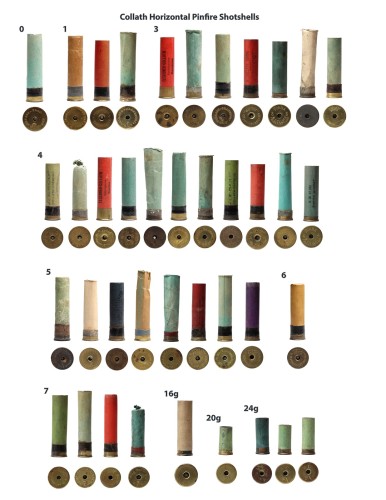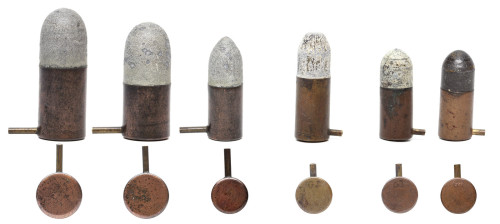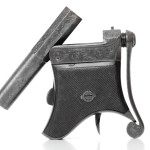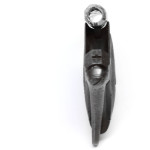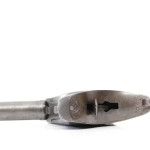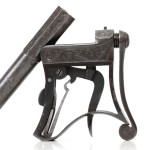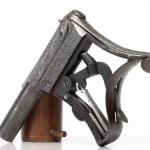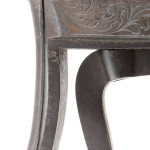Note: All new content is published at my new website, AaronNewcomer.com. This site will remain around until everything is transfered there.
Please visit AaronNewcomer.com to see lots of new articles on pinfire guns, Pauly guns, rare gun-related journals and books, unique cartridges and more!
Collath Horizontal Pinfire Shotshells
July 10, 2015Wilhelm Collath invented a shotshell variation that had a small pin that rested in a percussion cap half an inch into the case. The wider centerfire hammer would hit the pin which knocked it into the cap to set it off. The reasoning was to make the ignition travel backwards first so that it would have a little more time to burn the powder before building up the pressure to propel the shot. This allowed for less burning powder to travel down the barrel.
He also came up with his own size numbering system. They roughly equate like this:
0 -> 10g
1 -> 12g
3 -> 14g
4 -> 16g
5 -> 18g
6 -> 20g
7 -> 24g
8 -> 28g
As shown in the picture, they were also, but not commonly, made in a couple of the regular English gauges.
Nazi Pinfire cartridges during WWII
July 8, 2015
In March of 1938, the “Anschluss” took control of the company, Hirtenberger Patronen Zunhutchen & Metallwarenfabrik A.-G. of Hirtenberg, Austria and incorporated it into the Wilhelm Gustloff Foundation, which was a group owned by the Nazi Party.
On April 29, 1939 The company was officially renamed (from Hirtenberger) to Gustloffwerke Hirtenberger.
During this timeframe they typically used the letter “G” as a manufacturer’s mark on the headstamps, but also continued using the “H” for cartridges only produced in small numbers rather than replacing the bunters.
By April 3, 1945 the plant was mostly devastated from the war and fell into the hands of the Soviets and was quickly put under control of the USIA (Administration of Soviet Property in Austria) and the company again renamed to Hirtenberger Patronen Zunhutchen & Metallwarenfabrik and eventually started production of cartridges again in 1946.
So from 1939 to 1944 The Nazi’s made pinfire cartridges in Austria.
No Comments »Explosive Pinfire Cartridges
July 3, 2015Here are some pinfire cartridges with explosive bullets. The two on the right are definitively made using Eugene Pertuiset’s patented formula by SFM. The rest are also thought to be.
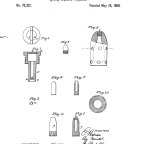 In the late 1860s a Frenchman names Eugene Pertuiset developed an special fulminate that would be inserted into a tube inside these bullets. When the bullet hit its target the heat produced from the kinetic energy coming to a stop would ignite the explosive powder.
In the late 1860s a Frenchman names Eugene Pertuiset developed an special fulminate that would be inserted into a tube inside these bullets. When the bullet hit its target the heat produced from the kinetic energy coming to a stop would ignite the explosive powder.
The Times of London, at the time reported on a demonstration at a horse slaughterhouse of these being tested and demonstrated on a beast that had “been condemned as irreclaimably vicious”. Long story short; when the horse was shot it pretty much blew out nearly all of its head and liquified its brain.
The witnesses were pretty impressed that this kind of damage could be done by something a man could carry in his pocket.
Russia actually adopted its use for a short time until the Saint Petersburg Declaration of 1868 — which succeeded the First Geneva Convention — renounced the use, in time of war, of small explosive projectiles in Russia and Europe. The United States declined to hamper themselves by any such agreement.
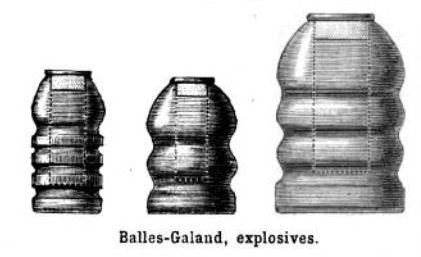 According to the publication, Album-Galand, Galand’s shop sold Purtuiset bullets in boxes of 25 for 32 francs for 4g and 8g, 22 francs for 10g and 22 francs for smaller sizes.
According to the publication, Album-Galand, Galand’s shop sold Purtuiset bullets in boxes of 25 for 32 francs for 4g and 8g, 22 francs for 10g and 22 francs for smaller sizes.
This publication also states that Galand made his own explosive bullets as well.
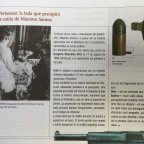 On August 17, 1886 Gregorio Saturnino Ortiz attempted to assassinate Máximo Santos, the president of Uruguay with one. You can click the thumbnail to see the full article. but the rough translation is as follows:
On August 17, 1886 Gregorio Saturnino Ortiz attempted to assassinate Máximo Santos, the president of Uruguay with one. You can click the thumbnail to see the full article. but the rough translation is as follows:
Pertuiset, the bullet that precipitated the fall of Máximo Santos
A famous photograph [detail] Maximum Santos after the attack.
Triumphant Revolution MILITARY ON Quebracho, Maximo Santos, despite its openness attempt with the Ministry of Reconciliation, began his political demise.
An attack that was subjected by Gregorio Saturnino Ortiz August 17, 1886 contributed to his departure from government and the country.Ortiz shot him at point blank range with a revolver Lefaucheux system 12 mm Pertuisset loaded with explosive bullets.
They contain in their inner mercury fulminate, highly sensitive to percussion. A small spike acts by inertia when the bullet hit against the selected target, causing detonation fulminate and lead the projectile is opened. Projection of fragments forward causes tearing wounds, increasing the risk of infection.
The bullet entered his right cheek Santos and exploded in your mouth. The he wounded lost two teeth and suffered lacerations on his left cheek caused by fragments of explosive bullet out.
Ortiz – perhaps thinking he had killed Santos – fled down the street [for Ituzaingó] chased by police. As a last resort Ortiz fired a shot – the second day – without success to his pursuers.
He caught looking almost applied the revolver to his right temple and fired the third shot of the day. This time the result was final.
 And a picture of Gregorio Saturnino Ortiz after he committed suicide with the explosive Pertuiset pinfire cartridge.
And a picture of Gregorio Saturnino Ortiz after he committed suicide with the explosive Pertuiset pinfire cartridge.
New Russian Cartridges
August 29, 2014I was able to add some new Russian pinfire cartridges to my collection. These were excavated from the ground in Ukraine.
Information about these can be found on their Manufacturer’s Page
and

I also acquired some unknown cartridges that were excavated around Ukraine. I have no idea who made these.
No Comments »The Pinfire Page, Issue 6 – Auxiliary Pinfire Percussion Adapters
June 7, 2014In this issue of my Pinfire Page[1] in the IAA Journal I took look at some variations of auxiliary pinfire percussion adapters and a few reloadable pinfire cases. These first 2 were made for specific guns that could be easily modified to accept either cartridges or the adapters. You will notice on the 15mm pistol that a special piece fits in the slots to allow it to accept cartridges. The 15mm adapters are thought to have been made by Lepage Frères. In the middle is a 12mm adapter, followed by a 9mm adapter.

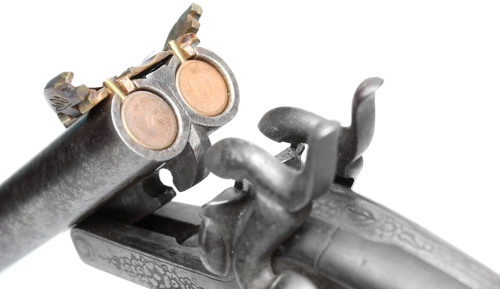

Here are 4 variations of 12mm adapters. These have a tapered “pin” to allow them to fit in an unmodified 12mm pinfire revolver. The screw on the bottom of the three, unscrews to allow cleaning by pushing something all the way through from the pin.

These next 4 are reloadable cases. They all are set up like the picture of the inside view. It allows one to easily stick any percussion cap inside and load with powder and a bullet. All of the examples on this page would be a great accessory to have when a supply of cartridges ran out.
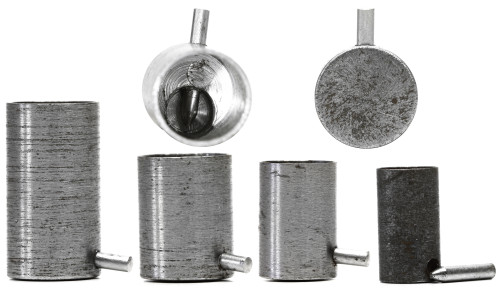

1. Newcomer, Aaron. “The Pinfire Page.” International Ammunition Journal. 497 (2014): 52. Print.
No Comments »Delvigne Breech Loading Underhammer Deringer in 9mm Pinfire
April 29, 2014This Delvigne Breech Loading Underhammer Deringer was Manufactured by Falisse & Trapmann in Liège, Belgium. It follows Delvigne’s French patent, 12683, which was issued on 22 January 1852. The patent image shows a percussion version, and this is the only pinfire version that has been discovered so far that I know of.
No Comments »The Pinfire Page, Issue 5 – The Earliest Pinfire Shotshells
April 26, 2014
In this issue of my Pinfire Page[1] in the IAA Journal I took a look at some of the earliest pinfire shotshells ever made. Here is the info about them:
24 Gauge Pinfire Cartridge by Casimir Lefaucheux
24 Gauge Pinfire Cartridge by Gévelot

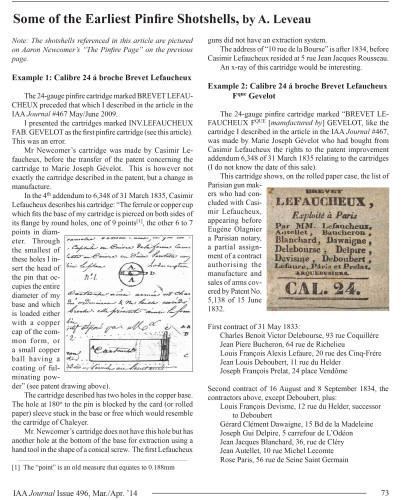
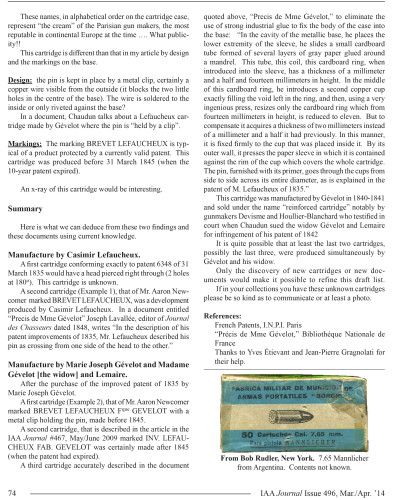
1. Newcomer, Aaron. “The Pinfire Page.” International Ammunition Journal. 496 (2014): 72. Print.
2. Leveau, A.. “Some of the Earliest Pinfire Shotshells.” International Ammunition Journal. 496 (2014): 73-74. Print.
No Comments »4 Gauge Pinfire Shotshell Box
February 1, 2014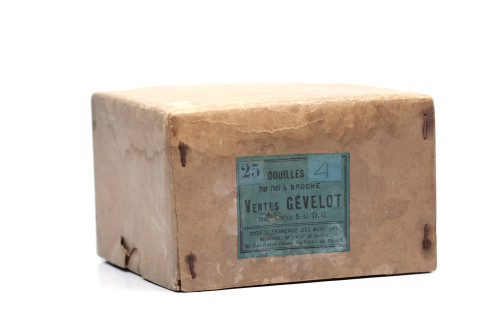
This is one of the largest pinfire shotshells. There is also one, a 32mm shotshell, that is a little larger. These were used in large pinfire punt guns.

Eley 20g Pinfire Shotshell Box
January 29, 2014
This is a box I picked up recently 20 gauge pinfire shotshells manufactured by Eley Bros Ld. They date to the early 1900’s.
No Comments »11mm and 8mm Pidault & Cordier (Raphael) Cartridges
January 24, 2014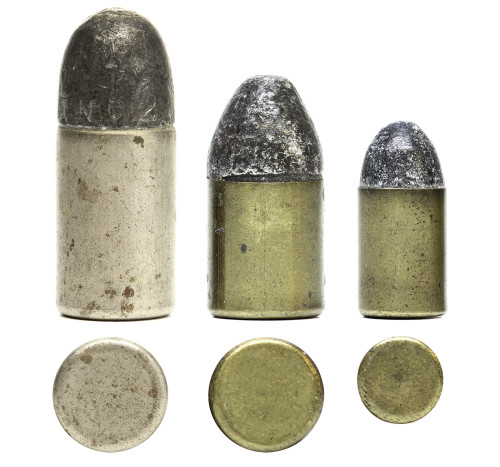
What is commonly known as the Raphael cartridge was initially patented by a Frenchman named Charles Carroll Tevis in 1856. He was associated with a man named Pidault Martial and together they improved the patent and released the first Pidault centerfire revolver in 1858. Then on May 28, 1860 Pidault, in conjunction with Charles Cordier, patented this variation which has become known as the Pidault Cordier Revolver. A very similar revolver which does not have any markings on it by Pidault & Cordier was used in the American Civil War. It uses this same cartridge and is thought to be based on the same patent. On September 21, 1861 106 of these 11mm revolvers were purchased by the Union from George Raphael, a friend of Abraham Lincoln, for $26.33 each; making them one of the most expensive revolvers of the war. Some were stamped “Raphael / Paris” on the barrel. It is unknown if Pidault & Cordier or someone else manufactured these Raphael-marked revolvers.
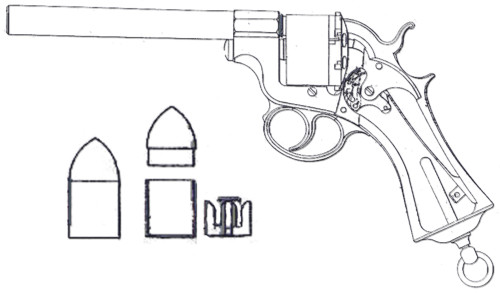
Page: 1 2 3 4

